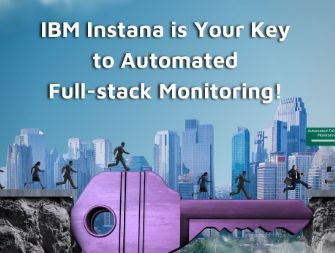August 2025 – Austin, TX
If cloud computing were a three-course meal, Platform as a Service (PaaS) would be the entrée—ready to eat, beautifully plated, and saving you the hassle of prepping ingredients from scratch. In 2025, PaaS is empowering developers to build, test, and deploy applications without sweating the details of servers, storage, or networking. The result? Faster time-to-market and fewer headaches for everyone involved.
Why PaaS Is Thriving
As digital transformation accelerates, organizations need to roll out new applications and features at breakneck speed. Infrastructure as a Service (IaaS) offers the building blocks, but still requires significant configuration and management. PaaS goes a step further, delivering:
-
Preconfigured development environments.
-
Integrated tools for coding, testing, and deployment.
-
Built-in scalability and security.
According to Gartner, by 2027 over 65% of all enterprise applications will be built and deployed using PaaS platforms (Gartner, 2025).
Core Capabilities
-
Application Development Frameworks: Prebuilt templates and libraries to speed coding.
-
Database Management: Integrated, managed databases with automatic backups and scaling.
-
DevOps Integration: CI/CD pipelines for automated testing and deployment.
-
Scalability: Auto-scaling to handle workload spikes without manual intervention.
-
Security & Compliance: Built-in identity, encryption, and compliance controls.
Business Impact
-
Startups: Launch minimum viable products (MVPs) in weeks instead of months.
-
Enterprises: Modernize legacy applications without massive infrastructure overhauls.
-
Government Agencies: Build citizen-facing services faster while adhering to compliance frameworks.
A 2025 Forrester report found that organizations using PaaS reduced application development cycles by 40% and cut operational costs by 25% compared to traditional methods (Forrester, 2025).
PaaS vs. Other Cloud Models
-
IaaS: You manage the infrastructure; the provider manages the hardware.
-
PaaS: Provider manages both infrastructure and development platform.
-
SaaS: Provider delivers fully developed applications to end users.
PaaS strikes the balance—offering control over the application without the burden of infrastructure management.
Popular PaaS Platforms
-
Microsoft Azure App Service – Strong enterprise integration.
-
Google App Engine – Auto-scaling and language flexibility.
-
IBM Cloud Foundry – Open-source foundation with enterprise-grade support.
-
AWS Elastic Beanstalk – Quick deployments with minimal configuration.
Challenges in Adoption
-
Vendor Lock-In: Migrating apps between platforms can be complex.
-
Customization Limits: Some platforms restrict access to underlying infrastructure.
-
Cost Overruns: Without careful monitoring, scaling can increase expenses unexpectedly.
The Future of PaaS
AI integration is the next frontier—PaaS platforms will soon offer intelligent code suggestions, automated performance tuning, and predictive scaling. Expect deeper ties with serverless computing, allowing developers to build event-driven applications that only consume resources when needed.
With edge computing on the rise, Edge-PaaS will emerge, enabling low-latency applications that run closer to the user while still leveraging centralized development platforms.
Closing Thought
Platform as a Service gives developers the freedom to focus on what they do best—building great software—while the platform handles the heavy lifting. In the race to innovate, PaaS isn’t just a shortcut; it’s the express lane.
References (APA Style)
-
Gartner. (2025). Forecast: PaaS Market Growth 2025–2029. Retrieved from https://www.gartner.com
-
Forrester. (2025). The Total Economic Impact™ of PaaS Solutions. Retrieved from https://www.forrester.com
-
IBM. (2025). What is PaaS?. Retrieved from https://www.ibm.com
Samantha Cohen – Co-Editor
Dallas, Texas
Peter Jonathan Wilcheck – Co-Editor
Miami, Florida
Post Disclaimer
The information provided in our posts or blogs are for educational and informative purposes only. We do not guarantee the accuracy, completeness or suitability of the information. We do not provide financial or investment advice. Readers should always seek professional advice before making any financial or investment decisions based on the information provided in our content. We will not be held responsible for any losses, damages or consequences that may arise from relying on the information provided in our content.



